- Home
- About us
- Products
- Dealer Enquiry
- Blog
- Contact Us
- Home
- About us
- Products
- Dealer Enquiry
- Contact Us
- 044 -2486 1994
- +91 99623 98222
- sales@nantech.in
- REQUEST A QUOTE
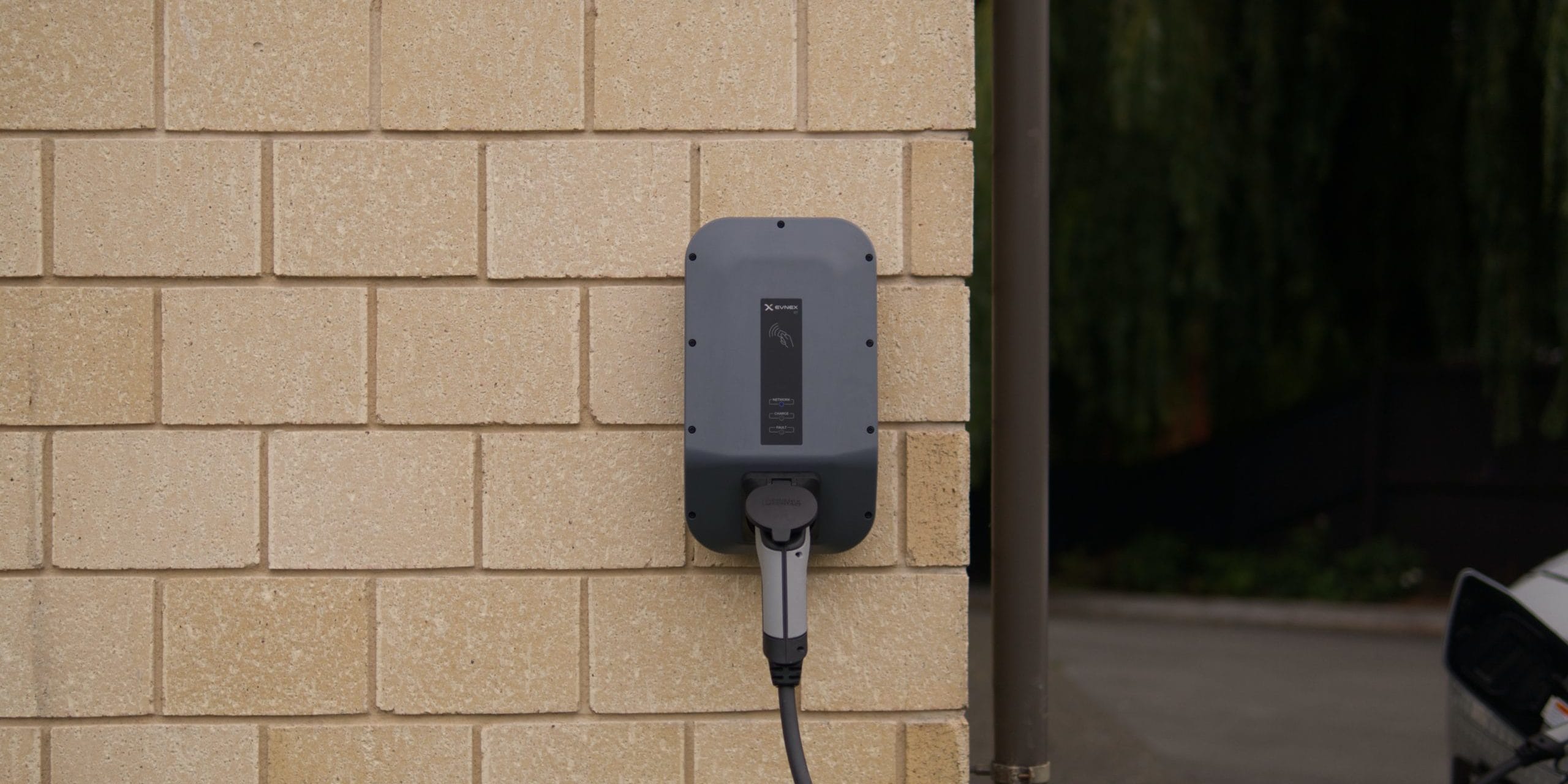
EV chargers supply the electric energy required to recharge plugs in electric vehicles. Since EV chargers are mandatory, one has to bear in mind the requirements for purchasing an EV charger. The EV chargers supplied by Nantech match all the Chennai buyers' parameters to such an extent that they don't need to probe deep into the specifications of buying an EV charger. The following aspects should be taken into consideration while purchasing an EV charger.
If one can do the charging at night, it is preferable to buy a cheaper Level 2 charger and to take out the car fully charged before going out. Again the cost to charge an EV depends on the car model, size of the battery, and whether the charging is done at home, in public, or workplace. The two types of chargers are hardwired and plug-in. The former is set into a fixed position and is connected to the electric supply permanently, while the latter is connected to an outlet.
Since safety is the predominant aspect of buying a car, ensure that the charger purchased is safe for the car. All established manufacturers bear this in mind, and a Chennai manufacturer of EV specifically designs chargers considering this in mind.
One needs to measure the distance between parking and the spot to install the port to assess the cord length before purchasing a charger. It is always better to talk with an electrician and check the electrical system to get more idea about the installation process.
In a tethered charger, the charging device is attached to the cable itself, thereby making the charging process more smooth. Here the cable is attached to the unit itself, making it more convenient and easy for charging on transportation. Since most cars supply with the cable, purchasing an untethered charge makes sense as it is neater and requires less space than the tethered charger.
It is always better to purchase batteries that do not require a 25 AMP charging socket for charging. Chennai based companies provide batteries which can be charged in 10 AMP or 15 AMP household socket. Conventional charging takes more than 6 hours, whereas a 90-second battery swap saves time. This accelerates the technological process involved, thereby making the whole process informative.
After installation, one has to ensure that a compliance certificate is delivered. After making all arrangements and even then the charger breaks down, the electrician can be made accountable. The charger purchased should be checked at least once a year, and it should always be clean and protected.
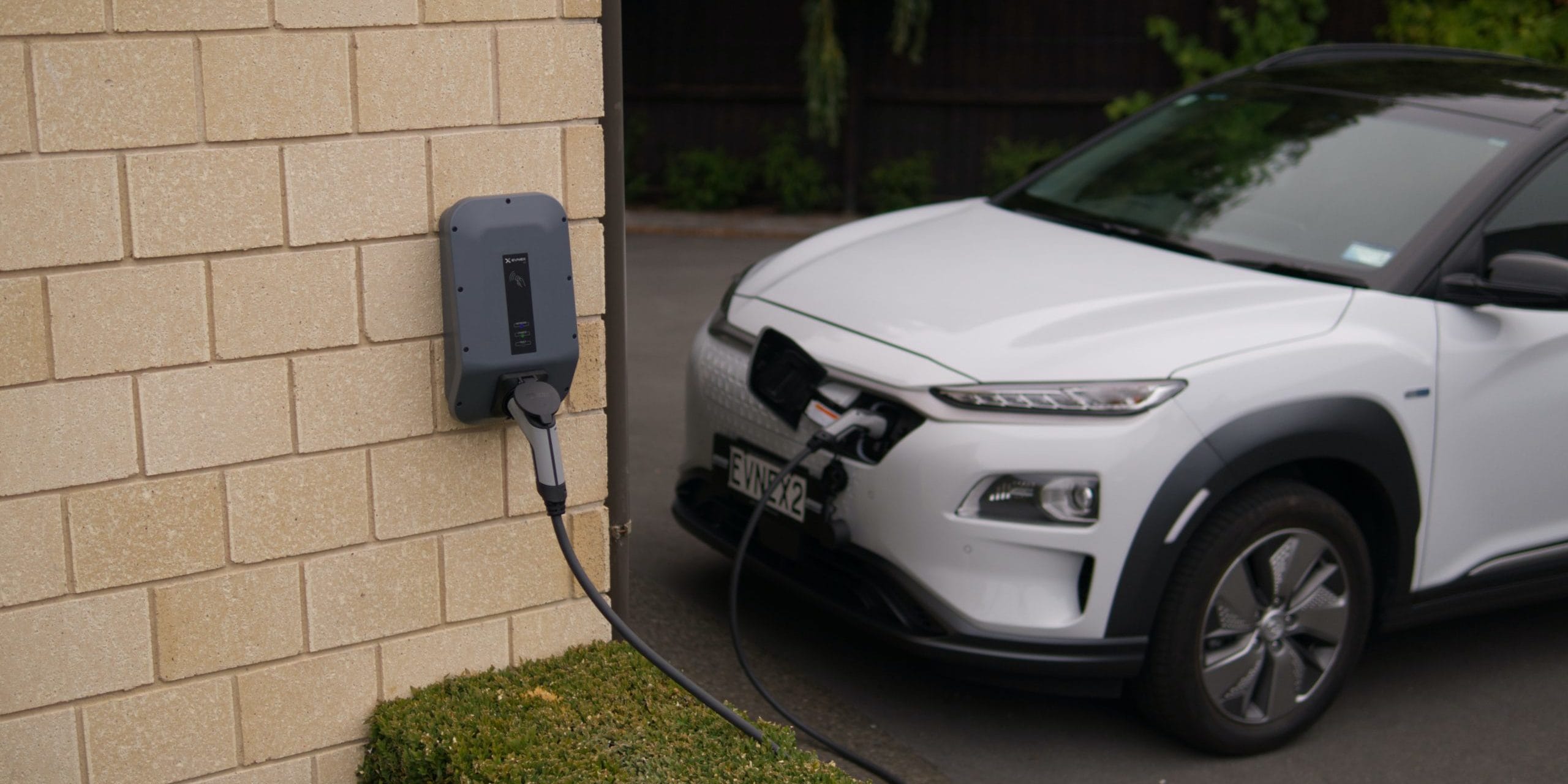
The world is fast changing. With all the commotion regarding "Save mother earth" and "Prevent global warming," every other company is striving hard to develop environment-friendly innovations. From the banning of plastics to promoting natural resources for the generation of electricity, all such initiatives are undertaken by the people. One such invention is electric automobiles. These electrically run automobiles are not only a fantastic product of one's creativity but also fast replacing conventional cars which use petrol, diesel, etc. Chennai is one of India's first few cities where the government has decided to set up electric vehicle charging stations. Moreover, these charging setups will be set up in government office parking lots and on NHAI and state highways. Suppose you are also looking to set up such charging stations, Nantech Power Systems Pvt Ltd is the best option for you.
It is an electric vehicle charging station, also known as electric vehicle supply equipment, electric recharging point, electronic charging station, an apparatus that connects an electric vehicle to a source to recharge electric cars, electric vehicles, and plug-in hybrids.
What are the different types of EV chargers?
There are three main types of electric charging
It requires a cord with an attached control box. It is usually supplied along with the electric vehicle. It takes approximately 16-20 hours to recharge the vehicle's batteries completely. However, its time of charging may also depend on the capacity of the car. All one needs to do is plug it into a three-pin well-grounded wall socket. It doesn't require any additional hardware installation. The only drawback it has is that it takes a lot of time to charge.
An additional hardware installation is needed in this type of charging, that is, of an AC wall box charger. It could be installed either at the customer's home or in their office. This additional equipment will enable the electric vehicle to be fully recharged within a maximum of about 7 hours, or more, depending on the electric automobile's capacity. Furthermore, it is said that it is more efficient in terms of energy use. Since it has the upper hand over the level 1 EV charging, it is naturally more expensive due to its intricate hardware.
This type of charging is called DC fast charging. It charges the battery to about 80 percent in less than an hour. The mechanism of action is that it converts the current from AC type to DC type, thereby allowing direct storage into the electric vehicle batteries. Sophisticated hardware is used for this charging. It is usually found at public charging stations.
Electric automobiles are the future of transportation. Its charging stations form the power source of the same, making it necessary for us to choose a cost-effective, energy-efficient, and worthwhile charging alternative.
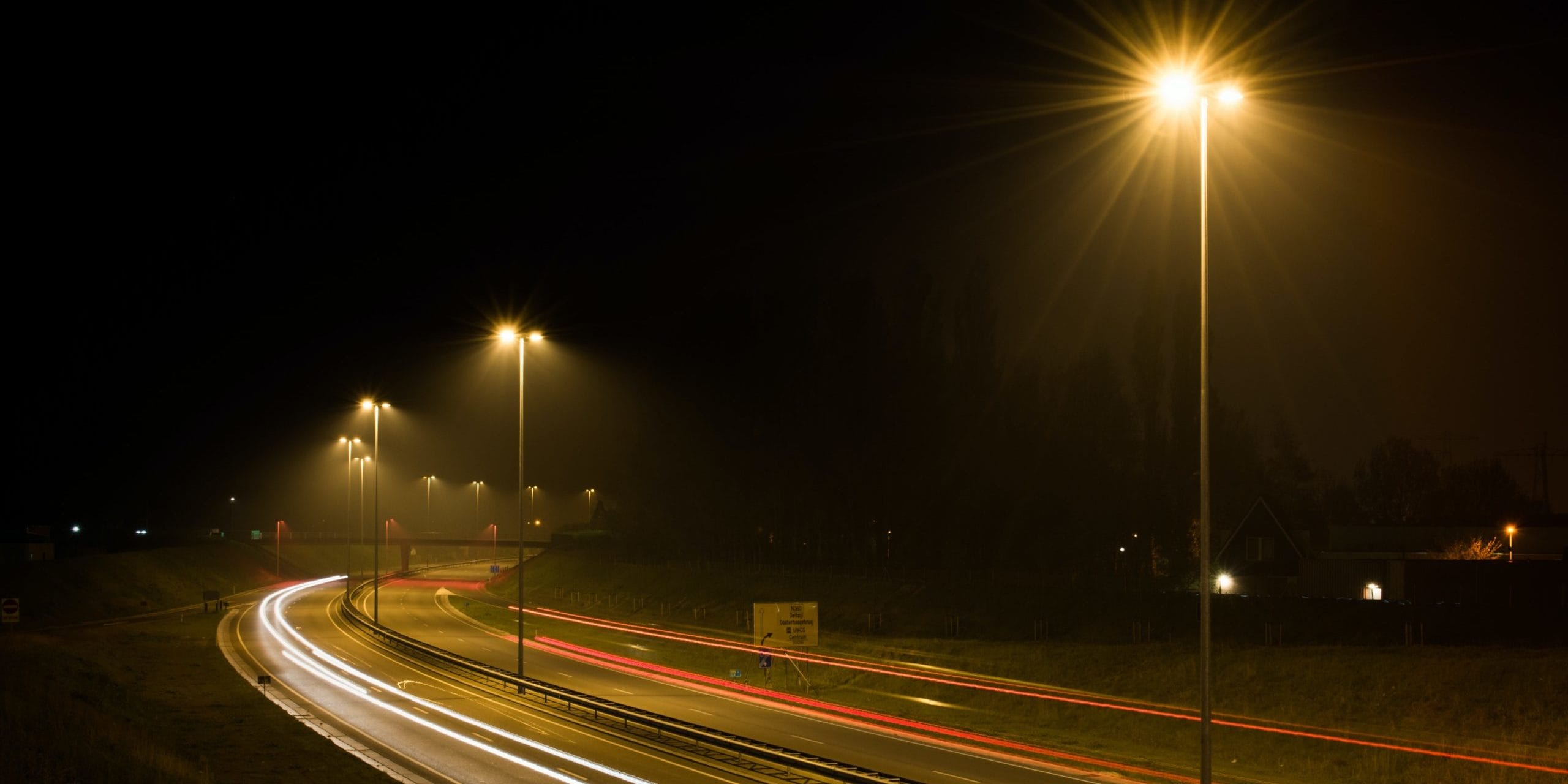
Advancing into a sustainable world, there has been a paradigm shift globally onto the usage of solar-powered products. Solar street lights are the emerging renewable light sources for our streets. They use photovoltaic (PV) panels or commonly called solar panels for the conversion of solar energy into electrical energy.
Many types of solar street lights are manufactured based on different types of each component.
Firstly, panels are available for various wattage systems starting from a minimum of 8W. Two types of panels of conversion are available, namely, mono-crystalline & poly-crystalline. Monocrystalline panels have higher conversion rates.
Smart solar lights use LED lights against fluorescent lamps as they consume lesser energy, are highly luminous and save capital. The Government of India runs the world’s largest streetlight replacement programme called LED Street Lighting National Programme (SNLP). The Greater Chennai Corporation has switched to LED lamps for street lights which is helping them save about 30Cr annually!
The pole needs to stand strong for climatic variations like rain and wind resistance. Usually, the pole has attached to it, the lamp, PV and additional accessories, if any. Nantech provides durable and corrosion resistant poles with an alluring look.
A battery is rechargeable during the day. It is meant to store the electrical energy which is converted from solar energy by the PV and is used during the night. Energy can be stored to work as a backup on cloudy or rainy days, thus making the lifetime of a battery crucial. While the gel cell deep cycle batteries & lead-acid batteries are common, the lithium-ion batteries are an emerging trend because of their higher lifetime of about 5 years.
Solar street lights can be used for residential, commercial as well as industrial purposes. The appealing and substantial benefits of switching to cleaner and greener energy resources has struck people around the world! Do check out our products at Nantech Power Systems Pvt Ltd.

Chennai being a metropolitan city is a massive consumer of electricity and was infamous in the past for having frequent power cuts. The situation has improved with the introduction and application of new technology in power production and distribution. The sheer size of the city demands a complex system of power distribution, and that coupled with its heterogeneous urban and sub-urban localities requires even greater planning and execution to ensure continuous electricity is supplied to the entire city. One of the most promising solutions to this massive challenge is using an electrical power management system.
Due to increasing complexities like different loads and supplies, power-sensitive equipment, higher safety standards, and an all-around high need for comprehensive management, an electrical power management system needs to put in place. This system aims to provide real-time observation and control of the electrical states of entire cities. The power management system provides safe and reliable operation of your power distribution systems including the equipment attached to it. This system provides the following uses:
An electrical power management system is based on an intricate relationship between a digitalized background and quality hardware. There are sensors placed in particular positions to provide accurate real-time readings of electrical indices, power supplied, and the power consumed. These sensors relay their input to power metering devices, which have various capabilities like protection relays, and motor control units. This system along with the addition of smart devices installed provides a fully digitalized solution to power-related problems.
Also Read: Methods For Getting Through Power Cuts
The applications of electrical power management systems include:
Electrical system health and efficiency: - With the facility to record real-time electrical activities these systems can provide a high level of safety by preventing overloads, short circuits, identifying faulty equipment, etc. Along with this, it gives information about how we can improve the efficiency of a system.
Capacity management: - By recording and displaying past data, the future trends of power distribution can be predicted. For example, using previous data, the power management system of Chennai was able to avoid a wide-scale power cut when the Prime Minister of India requested its citizens to turn off the lights and fans in honor of the health care workers during the lockdown.
Equipment Monitoring: - Faulty equipment or underperforming equipment can be detected and replaced by using smart technology. Harmonic wave distortion can also be prevented effectively.
Power event Analysis: - In general, the electric grid is dynamic and prone to regular disturbance. This system can detect these disturbances and find out the root cause and isolate it.
Since Chennai is an ancient city and is ever-evolving, it is difficult to place a single new electrical power management system for the entire city. However, big institutions, offices, factories can independently install such systems for better efficiency and safety. A clear vision and thoughtful execution are of paramount importance to connect all these systems to make Chennai virtually a high functioning single organism.

An Uninterrupted Power Supply (UPS) system is an emergency power system that provides backup power for your connections when the main power supply line fails to deliver or the voltage levels drop below a certain threshold. During Power Cuts, A UPS system comes in very handy as it not only supplies three-phase power to your equipment but it also protects it from supply line noise, surges, and voltage EMFs.
We still use these systems for backup power supply, but now that Online UPS systems are the future, we should discuss them first.
In the earlier days of UPS systems, most of Chennai used offline systems. These systems worked by basically providing backup power to the load only when the mainline failed. These systems directly give raw mains to the connections and a connected battery in parallel to the supply line. Link to the mainline ensures constant power supply to the battery for charging, and in a power failure, or if voltage levels drop, then battery power is switched on.
The drawback is that since it connects directly to the main power supply line, it provides little surge protection, which can damage your electronics. The other liability is that since the battery supply has to go through an inverter and then to your equipment, there is a time delay of around 10ms for power delivery and little to no voltage regulation. It isn’t a reliable system overall.
 These systems are a slight improvement over offline UPS systems. Line-Interactive Systems work by supplying power to the inverter, which then has a bypass line that sends DC to a connected battery. The supply line also connects to the main switch. When a power failure occurs, or a voltage drop occurs, the transfer switch closes, and we lose connection to the mainline. The battery then starts supplying DC power to the inverter, which converts to AC and supplies to your connections.
These systems are a slight improvement over offline UPS systems. Line-Interactive Systems work by supplying power to the inverter, which then has a bypass line that sends DC to a connected battery. The supply line also connects to the main switch. When a power failure occurs, or a voltage drop occurs, the transfer switch closes, and we lose connection to the mainline. The battery then starts supplying DC power to the inverter, which converts to AC and supplies to your connections.
The problem is that even though they protect your equipment better, it doesn't offer complete protection from surges. It has a power delivery time delay of around 5ms and voltage regulation of ±8-15% within nominal voltage values. It is an improvement, but compared to Online systems, it is still lacking.
These are the latest in the UPS systems! The improvement over Offline and Line-Interactive Systems is significant. They use a 'double-conversion' system. A Rectifier connected to the main supply passes DC to the inverter supplying AC, and a battery connected in parallel to this line along with a bypass switch. In a power failure, the power switch turns off, there is no power going through the rectifier, and the battery-inverter supply continues.
Thus, there is maximum protection from voltage surges, almost no time delay, and ±2-3% voltage regulation of the nominal values. Other advantages are:
These make Online UPS systems used in many critical areas such as data centers, hospitals, and businesses. Many people are upgrading their existing UPS systems to Online UPS systems!
So if you want the best Online UPS systems in Chennai, come to us at Nantech and check our UPS systems here!
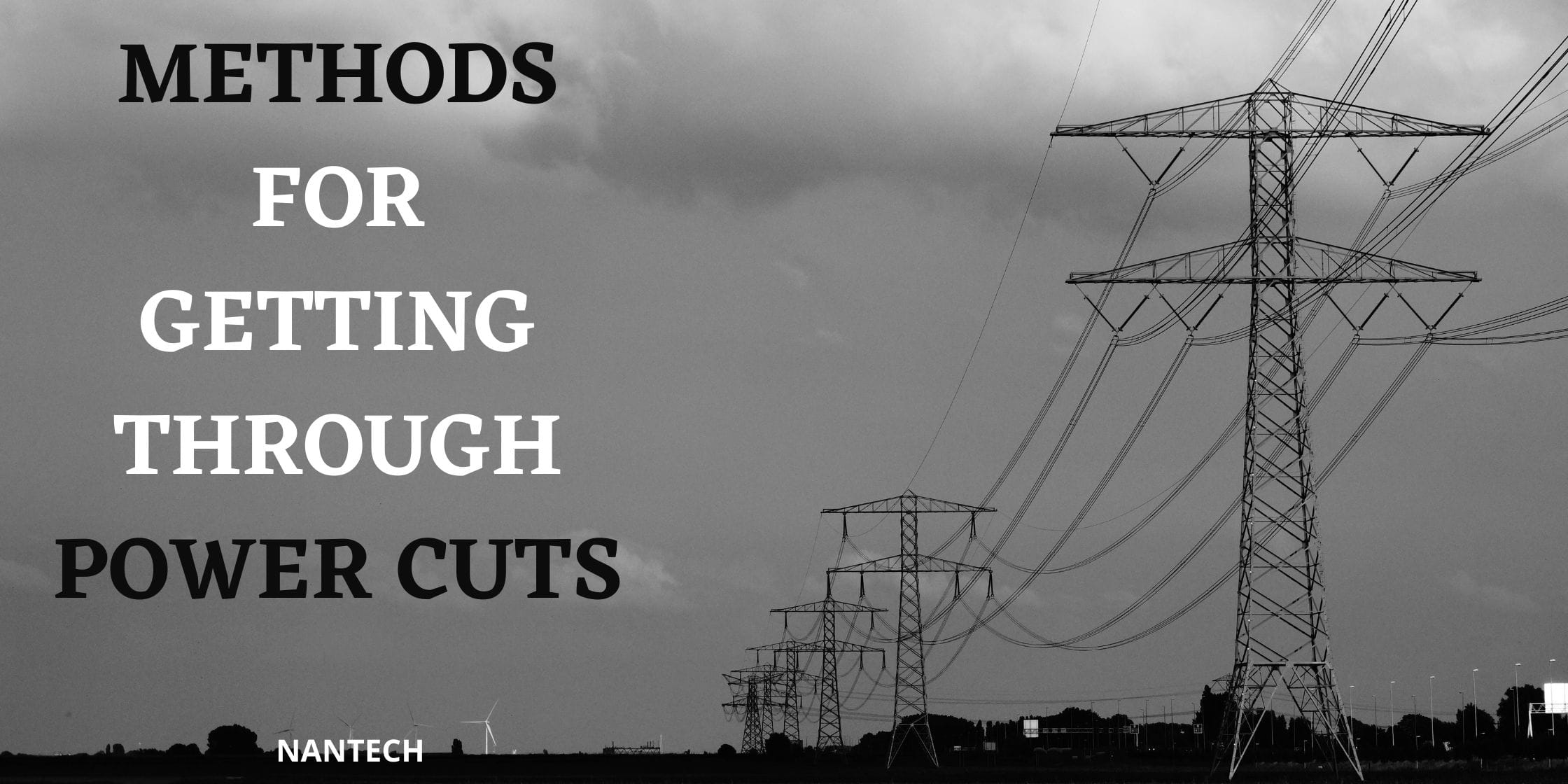
We heavily rely on electricity for our needs. From businesses to homes, office buildings, and factories – everywhere we depend on electricity for not just our day-to-day operations and conveniences, but also for maximizing business profits and sustaining organizations. Electricity is a key resource in every aspect of our lives today.
In a previous article, we mentioned how Chennai faces power cuts, and all the statistics related to it. We now know that power cuts can occur anytime and anywhere, hence we must prepare for the same by equipping ourselves with the right products to get us through one.
Fortunately, there are many such products and devices available in the market that are made so that we can get through such power cuts. Mainly, an Uninterrupted Power Supply (UPS) system is used, but there is one more feasible method that can prove more beneficial! This article shall give you an overview of all such methods, and in the end, a link to the best place to get them in Chennai!
UPS systems are the most common methods of mitigating power failures. The main idea of these systems is that there is a battery to store power, an AC/DC converting rectifier, and a DC/AC converting inverter. Many brands are available for the same as well. There are three types of UPS systems that are commonly used:
Online UPS systems – currently the best UPS system available in the market. This uses a ‘double-conversion’ process, first converting AC/DC to the battery, and in case of a failure, DC/AC back to the inverter, and then to the power lines. This has excellent noise protection, almost no power transfer time delay, and within ±2-3% voltage regulation, making it suitable for critical equipment.
Line-Interactive UPS Systems – These provide intermediate-level power protection. Here, a bypass carries power from your inverter (connected to the main line) to the batteries for charging, and the battery discharges back to your inverter in case of a failure. It also has better surge protection, 2-4ms delay in power transfer time, and output voltage regulation within ±8-15% of nominal voltage.
Offline UPS Systems – These provide a basic level of power protection for your equipment. We connect a battery in parallel to the supply line, and during the case of a failure, the battery supplies power to your connections. These provide little surge protection, a 2-10ms delay in power transfer for your systems in a failure, and little voltage regulation.
Also Read: Power Cuts Frequency in Chennai
Solar power systems are slowly gaining traction, both in business investments and in research advancement and funding. They mitigate carbon footprints and reduce pollution. We mention Solar systems because Chennai has a tropical climate for the most part of the year, where the sun shines upon us. Why not utilize it? Some uses for solar technologies are:
Nantech is your go-to shop in Chennai for all products pertaining to UPS systems, inverters, transformers, solar panels, SVRs - anything you may need! Please check us out by clicking the link!

Chennai is one of India’s bustling metropolitan cities, with many businesses running their day-to-day operations to many households living and thriving in communities and societies. Many restaurants are serving quick idlis, vadais, and dosas for people rushing to their offices, and many schools and institutes are grooming tomorrow's future. Even Metros are now coming to many areas, and soon we shall indeed be a metropolitan city.
Noticed something familiar in all these examples? They all require electricity. A day of not having electricity can make most of these businesses lose customers and hence profits. As an example, if metros don't get a power supply, their facility will completely stop. A regular office-going person wouldn’t be able to catch his train on time then.
Hence in this article, we shall explain how frequent power cuts are in Chennai and why they are essential for you to know. Through this article, we aim to convince you to invest in power-saving equipment that will benefit your business(es).
Now keep in mind that when we say power cuts, we could refer to two different scenarios:
An electrical fault in the supply line - This problem is something we should consider. Any issue (say) in the carrier line or a transformer at the electricity generation plant can make you have to wait while the power gets restored. Now here too, there are two sub-categories:
We can use scheduled outages as a metric since the others are something we cannot track. Please note that we are giving rough estimates backed by sufficient research. Now coming to the actual statistics:
In the last three years,
| Year | Number of Outages Scheduled | Number of Outage Areas/Events | Total number of Outage Events |
|---|---|---|---|
| 2019 | 19 | 7-8 | 133-152 |
| 2018 | 15 | 5-6 | 75-90 |
| 2017 | 14 | 5-6 | 75-90 |
We see that the power cuts have been increasing in frequency over the last three years. This data shows us that we need to prepare for any scenario by investing in good quality power-saving equipment. Nantech is your go-to place for all your power-saving needs in Chennai, with excellent products and services! Please come and check us out here, and we assure you of an enriching and rewarding experience!
We wish you a Happy New Year and Happy Shopping!
Reference
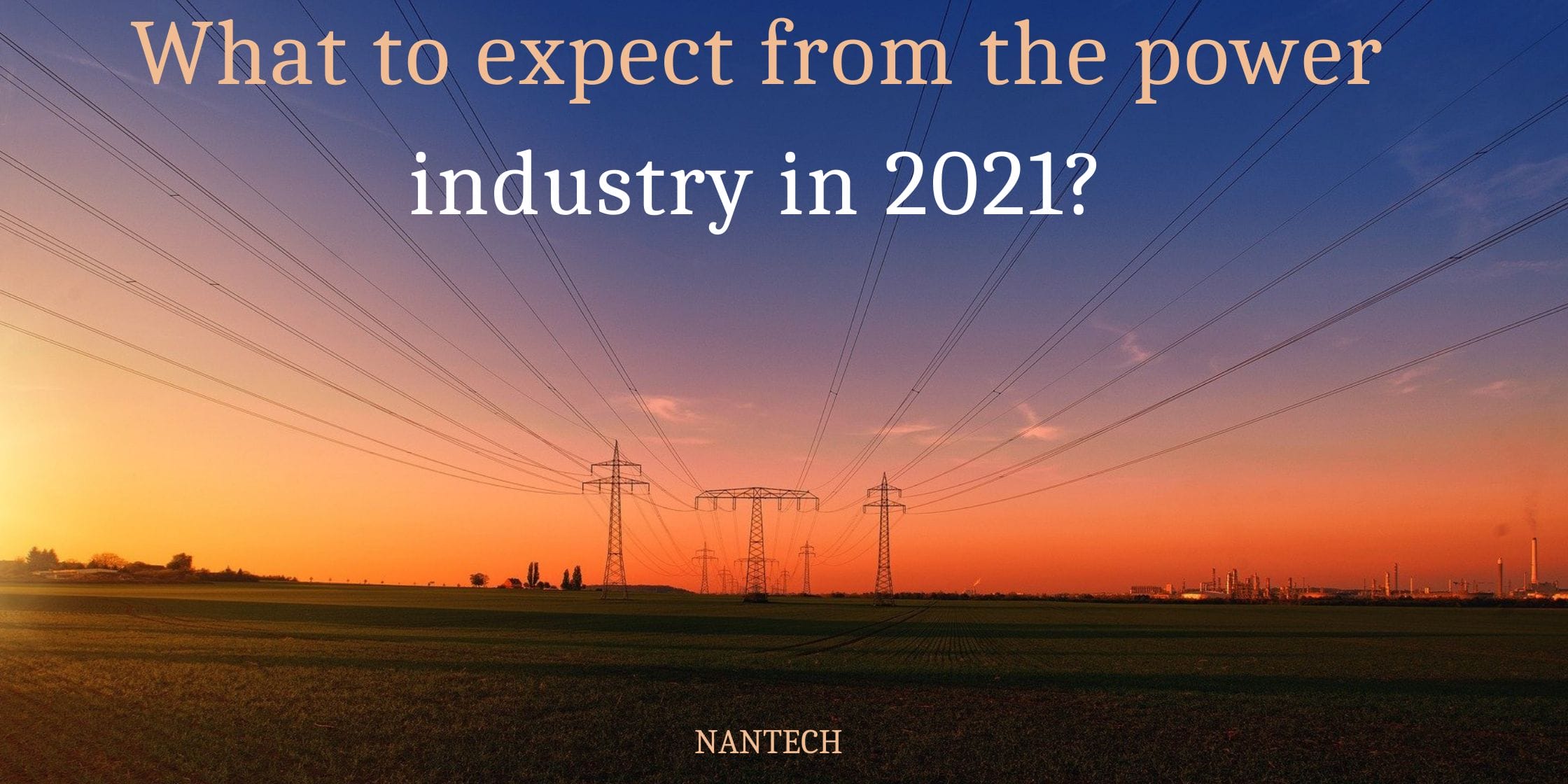
2020 was a rollercoaster ride for the world, effects of which have not wanned off yet and are expected to move onto 2021. Similar to other industries, the power industry also had to face a situation of massive unpredictability, not only in India but the rest of the world too. With threats like climate change and global warming inching closer, countries are ready to take bold steps to counter the threat. Of these countermeasures, changes in the power industry will be at the forefront of the battle.
In India, the government has revised its renewable energy target from 175 gigawatts to 220 gigawatts for 2022. That is a big step towards job creation and achieving carbon neutrality. Objectively, India’s power industry has three main focal points to deal with.
During the pandemic, new light was shone on the viability and stability of working in the IT industry and data center industry. The government has announced the installation of another one crore data center. These centers consume enormous amounts of power, and the power industry is expected to soon, incorporate a hybrid of coal and renewable energy transmission to supply this enormous demand. If planned efficiently, the transparent incorporation of renewable energy sources will greatly cut down on power losses and assist in achieving carbon neutrality. Renewable energy will also assist in data expansion and accommodate a higher capacity for data processing. The power industry will have to go the extra mile to maintain the robustness of its grid system and prevent shutdowns.
Also Read: Can Inverters Save Electricity?
A steady rise in sales and development of electric vehicles has been observed all around the world. Though not officially introduced in India, there have been talks of Elon Musk headed Tesla electric vehicles to start sales in mid-2021 in India. Since they are charged by electricity and houses need to have a steady source of renewable energy to charge the cars. That provides a boost to the upcoming solar inverters market that will help in job creation and environmental sustainability. Along with this, India has developed a single national power system and invested a lot of money in renewable energy making the transition from petrol and diesel to electric vehicles an easy one. In other parts of the world, innovation and development have led to the development of green hydrogen-powered homes and cars which release only oxygen and water vapor as their byproducts. The TATA automobile industry has also collaborated with foreign countries and invested in hydrogen-powered vehicles.
With most countries like The United States of America, The United Kingdom, and China pledging to become carbon neutral by 2050 and so on. India is not too far behind on making the same promise. To achieve this, massive electrification with thoughtful use and incorporation of renewable energy is of paramount importance. Being carbon neutral means absorbing all the carbon a country produces, leaving a net-zero carbon emission. As the consumption of electricity does not produce carbon dioxide, its widescale application has become mandatory.
The future of the power industry in 2021 is going to be dynamic. As the global focus of the power industry is shifting towards renewable energy, we at Nantech will do our best to assist by providing cost-effective renewable energy equipment.
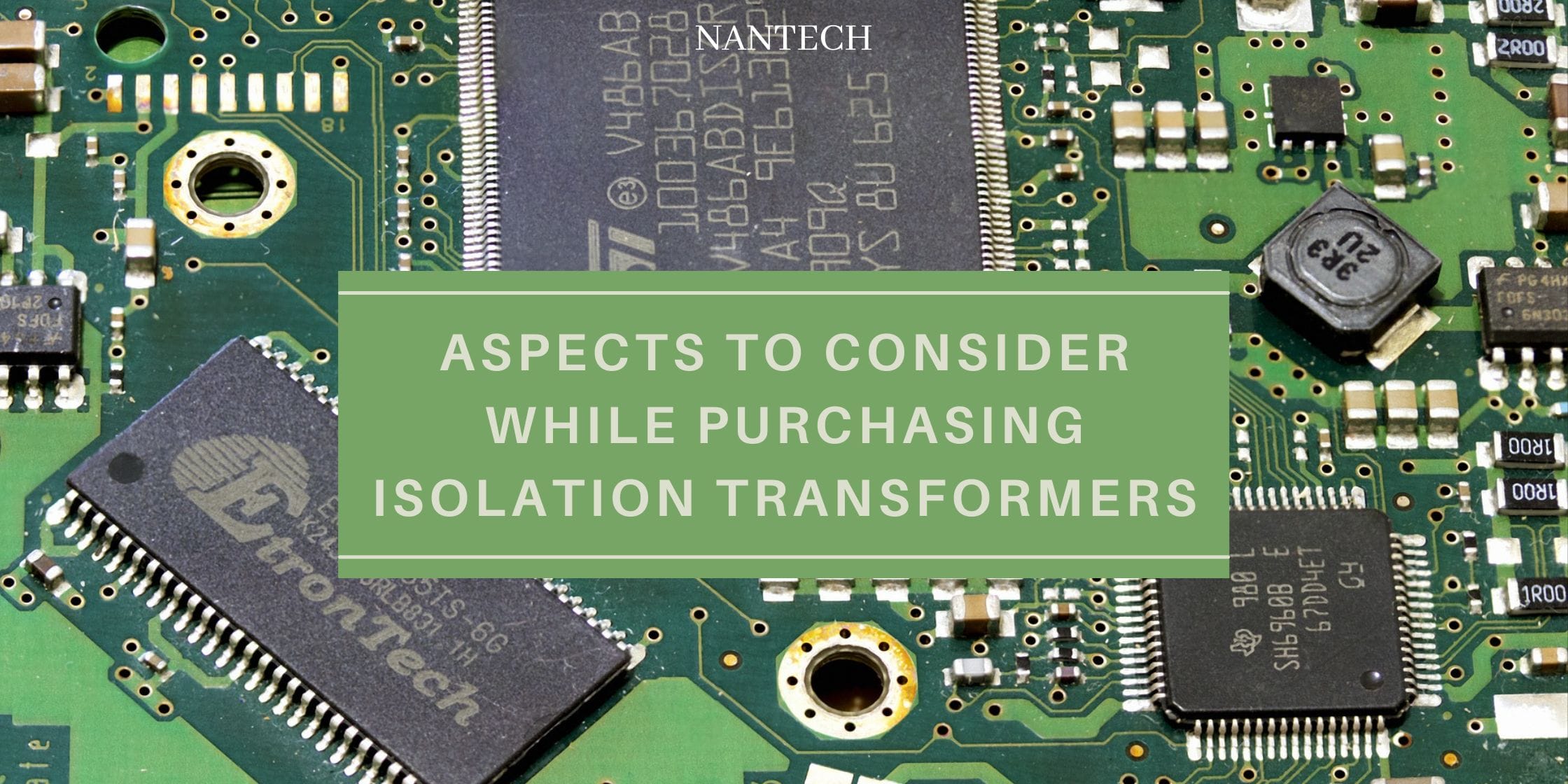
Chennai is a bustling metropolitan city with many people relying on the clean current to reach them. Transformers are an essential part of this chain of getting power to your buildings, and most transformers these days aren't equipped with the latest technology in the market.
An upgrade to the transformers used these days are isolation transformers. They are just like a regular transformer, but the windings couple through a common iron core. The coils have a turn ratio of N2/N1=1, and this setup helps us a lot in reducing power line problems like surges and spikes, and hence without electrically connecting the two circuits, one can safely pass AC. It provides galvanic isolation, which protects your equipment from electric shocks and suppresses noise in sensitive devices.
With a wide range of products available in the market, one must consider some aspects before purchasing isolation transformers. These are:
Since we use transformers to change the primary power supply voltage, we must carefully consider this factor. Even though transformers can accommodate different voltages, the primary power supply voltage will determine the transformer's input voltage. You can then decide the output voltage as per requirements.
We need to decide whether we have a single-phase or a three-phase requirement and accordingly choose our variant. This will depend on our output requirement. If we transport current to a house, small home, or an apartment building, we shouldn't need more than single-phase power and hence single-phase transformers for the job. Whereas if we are to supply to industries and factories that use heavy loads and heavy-duty equipment, we need a three-phase supply and choose a three-phase transformer.
This is a factor that deals with the question, "What is the requirement of our load?" For this, we need to consider both the size and the type of load involved. This one should ideally consider along with the previous consideration.
Consider this before you finalize your product for purchase. Where are you going to install the transformer – will it be indoors or outdoors? Depending on this, you have to make sure that your transformer has the necessary physical capabilities to withstand whatever the environment throws at it. That’s not all! Is your transformer going to be installed near any hazardous substances or some other dangerous environment? Ask these questions before you finalize your product's purchase and adjust either your setting or change the product to suit your needs of the installation.
After you consider all of the above factors, you can now get in touch with Nantech, which has all your transformer needs taken care of! With excellent quality products, easy installation, top-notch customer care, and timely after-sales support, you can rest assured of your purchase to be a great one! They have both single and three-phase transformers with ranges from 500-1500 kVA. They have a compact design that can upgrade your current transformer. There are Step-up, Step-down, and K-Rated transformers for you to choose from as well! Please go check them out now, and Happy Shopping!
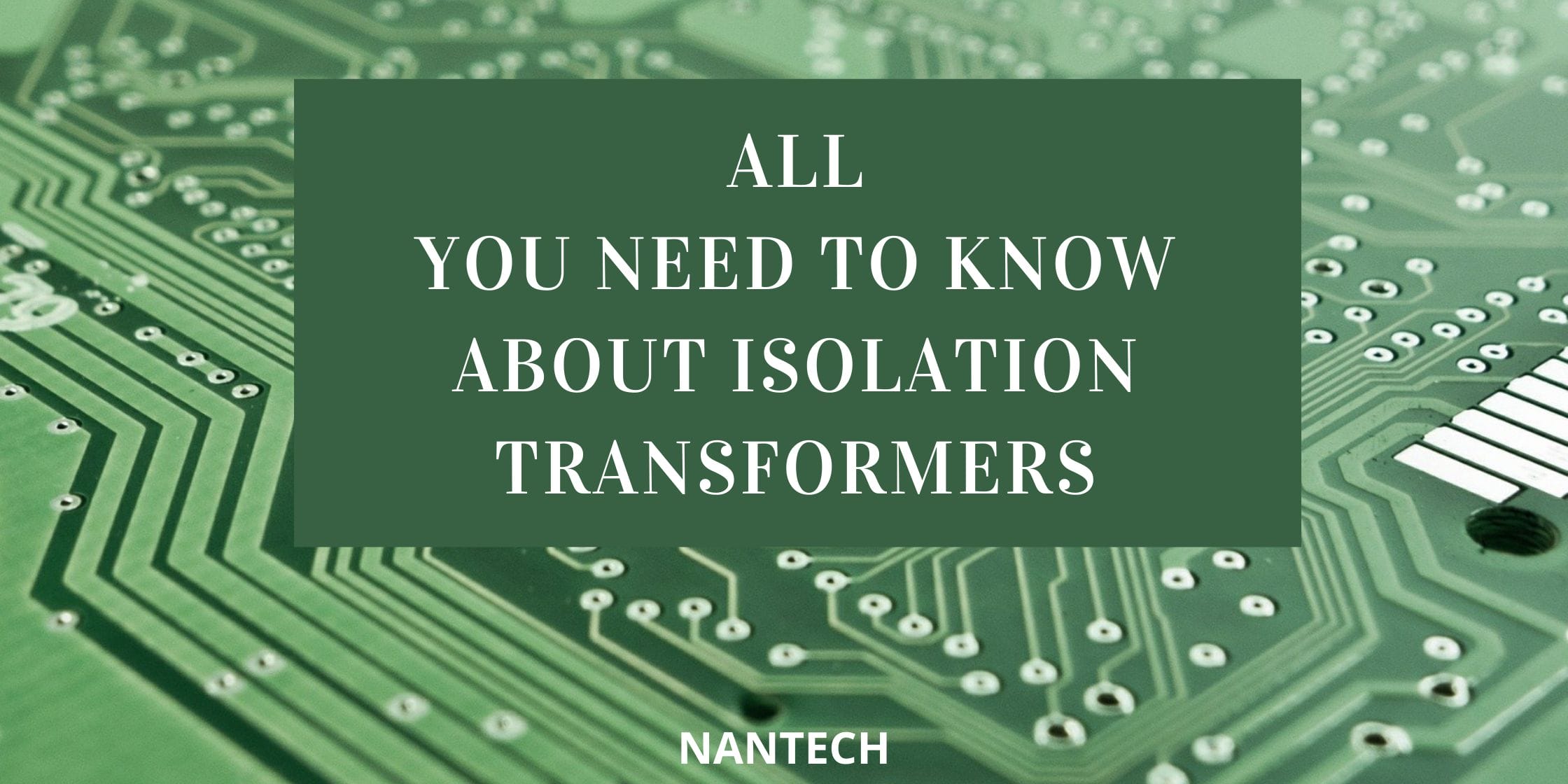
2020 has been a challenging year. Every individual has been forced to take precautions to prevent the virus from sabotaging them. Whether it was the government or renowned celebrities, they all emphasized one thing, stay safe. Safety is one important component to prevent numerous avoidable accidents, be it road traffic accidents or medical accidents, or even electrical accidents. Electrical accidents are usually curbed by planning circuit with every component engineered so that the whole system is fail-proof. One important component is the use of isolation transformers in this circuit. They provide safety gear to the equipment connected to it thereby rendering the gadget and the user using it free from hazard. Chennai is a major contributory city when it comes to hardware industries. It has the most productive technological advancements, giving us all the more reason to buy our electrical hardware. On its ground is the Nantech power systems Pvt Ltd, a manufacturing company that manufactures the most credible, durable, and top-level isolation transformers.
Isolation transformers are transformers that provide galvanic isolation between the powered device and AC power lines such that there is no DC path between the two. They are used to transfer electric power from an alternating current power source to a device, isolating the power source's powered device. This is usually done for safety purposes like to protect against electric shocks, to transmit power between two different circuits which are not supposed to be connected, and is also used to suppress electrical noise in sensitive appliances.
Isolation transformers permit the transmission of signals of the AC component to pass but prohibit the DC signals' transmission to pass through from one signal to the other.
 They serve three main purposes:
They serve three main purposes:
They are designed in such a way they block the interference caused by ground loops. These transformers have turned in the ratio of 1:1 such that the number of turns in the primary and the secondary windings are equal. However, when the voltage needs to be altered, isolation transformers are used to step up and step down.
What are the uses of Isolation transformers?
The primary uses of isolation transformers are as follows :
What are the specialized applications of isolation transformers?
These are isolation transformers made for a vast number of devices used for commercial purposes.
Isolation transformers are designed especially for medical appliances. Medical centers need electronic devices that require high voltages and are sometimes risky to operate. In these cases, the user's safety, the patient, and the device itself should be considered a top priority. Medical isolation transformers fill this gap, act as a gatekeeper, and provide protection.
Other specialized applications and their isolation transformers include – Pulse transformers, Austin transformers, Instrument transformers, etc.
Isolation transformers are not only used for safeguarding our electronic equipments, but they also make working on an AC appliance so much easier. They work in so many ways to help us bring the best out of the devices we use without any interruptions of any sort. Another added advantage is that they are enormously useful for testing power-related devices.